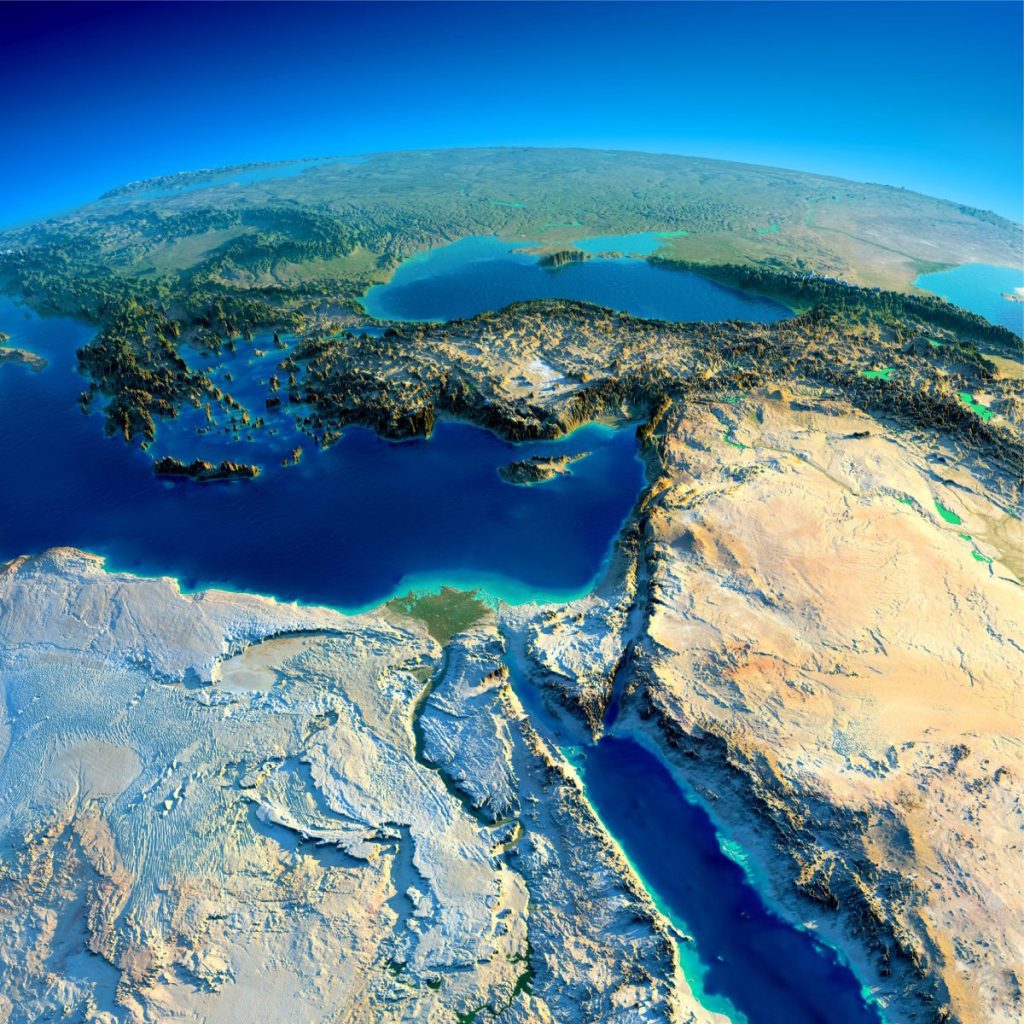Tethys Ocean had played a mjor role in the Geology of Israel. The Tethys Sea is the name of an ocean which according to the Plate Tectonic Theory has existed in the past and separated the continents Laurasia in the north and Gondwana in the south. Moreover, these continents split from the ancient continent of Pangea in the Jurassic Period. This ancient ocean has almost disappeared over the years, due to the movement of the plates in the Earth’s crust and the nearing of Europe, Africa, and the Arabian Peninsula. Today the only remnant is the Mediterranean Sea.
Credit: Lennart Kudling, CC BY 3.0, via Wikimedia Commons
The Ancient Sea Played An Important Role
The Tethys Ocean, a name shrouded in the mists of Earth’s distant past, was once a vast and vital expanse of water that played a crucial role in shaping the planet’s geological and biological history. This ancient ocean existed during the Mesozoic and early Cenozoic eras, stretching from the late Paleozoic to the early Cenozoic era, encompassing millions of years of Earth’s history.
Tethys Ocean played an essential role in the geology of the Land of Israel. Formerly, the Land of Israel was located in the depths of the Tethys Ocean. After exposure, the Sea swept the area, retreating and flooding the area several times in different eras. As a result, layers of sand and chalk formed above each other.
Plate Tectonics Theory In Israel

The Tethys Ocean and the land of Israel
These layered structures allow the formation of erosion craters such as the Negev Craters: Ramon Crater, the Small Crater, and the Large Crater. Evidence of the existence of the Land of Israel under Tethys Ocean is seen in the discovery of marine fossils in areas such as the Negev Desert, mainly in the craters. And in the Naftali Mountains, in the area of Manara Cliffs.
Echoes of an Ancient Realm
So the Tethys Ocean, an enigmatic and ancient water realm, represents a bygone era of Earth’s history. Its vastness and significance have left a profound mark on the geological narrative of our planet. While the Tethys Ocean may no longer grace our maps, it continues to captivate the imagination of geologists, paleontologists, and historians alike—reminding us of the ebb and flow of our dynamic planet and the ever-evolving story of life on Earth.

